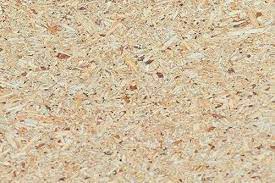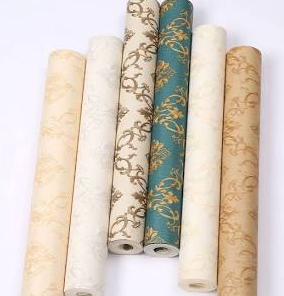Description
MFP CONSTRUCTION BOARDS
MFP board for many applications in construction. Perfect for sheathing walls, roofs, ceilings and floors. It is characterized by high innovation, attractive price, exceptional parameters and perfect quality. Thanks to this, it is so appreciated by many investors and construction companies.
APPLICATION OF THE MFP BOARD:
wall plating
roof plating
floor plating
plating of wooden ceilings
for structural components in wet rooms
for the construction of frame houses
for the production of packaging
Advantages / Parameters of MFP Construction Boards:
easy to cut and cut
reduced edge fraying
Multifunction
compact and uniform structure
resistance to deformation and bending
resistance to loads / does not break
perfectly stabilizes fastening of nails, screws and staples
PROCEDURE AND RULES FOR INSTALLING MFP BOARDS
MFP boards should always be used in accordance with current building regulations, construction design and technical conditions of use of a given building. Thanks to this, they keep their best parameters for many years.
- Before using MFP boards at the destination, they should be provided with 24-hour acclimatization time in the new conditions
- Wood-based panels should be protected against direct water exposure (both during construction works and after their completion). Why? The surface of the boards is ground, so that it maintains its smoothness, it must be protected from the effects of water.
- It is worth using 12 mm expansion joints between the panel and the wall: between the walls, when installing floating floors and near the chimney.
- For sections longer than 12 m, it is recommended to prepare a 25 mm expansion gap
- When using MFP tongue and groove boards, remember their upper and lower (base) part. There is always a technical inscription at the bottom. These tongue-and-groove plates are laid down.
- It is possible that the longer edges of the MFP tongue and groove not supported on joists require the preparation of an appropriate support
- When using water-based paints and adhesives, it is required to isolate the board by impregnation or painting with agents based on appropriate solvents. They help to obtain a smooth surface of the MFP board, which avoids the formation of small irregularities as a result of swelling of the outer layer.
MFP CONSTRUCTION BOARD – TECHNIQUE AND APPLICATION:
1. Floor and ceiling
MFP boards are laid perpendicularly or parallel to the floor beams, maintaining the offset ½ of the board relative to each other. Expansion joints are kept between 3-6 mm wide boards and must be filled with a flexible wood mass (e.g. glue). A 12 mm wide expansion gap should be maintained from the wall itself. MFP boards are insulated from floor beams. When laying larger surfaces (over 12 running meters), it is recommended to prepare additional 2.5 mm wide expansion joints for all panel joint edges (min. 1 mm tongue and groove panels on unprinted / base surfaces) regardless of the gap behavior. a wall; it is recommended to fill such expansion joints with an elastic mass (e.g. glue) intended for wood.
MFP Construction Boards
For 22 mm thick boards, regular and spiral nails with a minimum length of 51 mm or fluted nails with a minimum length of 45 mm are ideal. It is also possible to use screws (type SPAX 4×35) with a thread length of 35 mm.
A maximum of max. Between screws, nails and screws must be kept. distance of 150 mm at the extreme edges and max. distance 300 mm in the center of the plate. We avoid tearing the panel at the edges while maintaining a minimum distance from the edge of 8 mm. Similarly, a minimum distance of 16 mm should be maintained in the corners (16 mm and 32 mm for tongue and groove panels).
2. Walls
It is recommended to use 12-15 mm thick panels on the outer wall sheathing and 10 mm thick panels inside the building. MFP boards are laid on the walls vertically or horizontally, using a shift of min. 1/3 of the disc relative to each other. Keep expansion joints 3-6 mm wide. Joints are not filled. Additional expansion joints should be used between the MFP board and the foundation and on the coronary beam.
When laying larger surfaces (over 12 linear meters) from MFP boards, it is worth making an additional 2.5 mm wide expansion joint on all edges of the board connection (in MFP boards of the tongue and groove minimum 1 mm for unprinted / base surfaces) regardless of the behavior wall cracks.
For 12 mm thick boards, regular and spiral nails with a minimum length of 51 mm or corrugated nails with a minimum length of 45 mm are ideal. It is also possible to use screws (type SPAX 4×35) with a thread length of 23 mm.
A maximum of max. Between screws, nails and screws must be kept. distance of 150 mm at the extreme edges and max. distance 300 mm in the center of the plate. We avoid tearing the panel at the edges while maintaining a minimum distance from the edge of 8 mm. Similarly, a minimum distance of 16 mm should be maintained in the corners (16 mm and 32 mm for tongue and groove panels).
A maximum of max. Between screws, nails and screws must be kept. distance of 150 mm at the extreme edges and max. distance 300 mm in the center of the plate. We avoid tearing the panel at the edges while maintaining a minimum distance from the edge of 8 mm. Similarly, a minimum distance of 16 mm should be maintained in the corners (16 mm and 32 mm for tongue and groove panels). The thickness of MFP panels should be adjusted to the rafter spacing, parameters of panel deflections, type and slope of the roof slope.







Mariah –
Our order was well received. Warmest thoughts and best wishes for a Christmas!!!
kushala –
Happy Hugs To You This Christmas!! the product got to us in time.
michalo –
I am attempting to find things to order on your site!I suppose you have receive my email.
Still waiting
MEGAN Johnson –
I certainly will order by March, Thank you for the sample well received!
MEGAN Johnson
Olga Kusha –
Merry Christmas, with thanks for all you do! Thank you for the prompt delivery of MFP Boards
Mrs. Olga Kusha